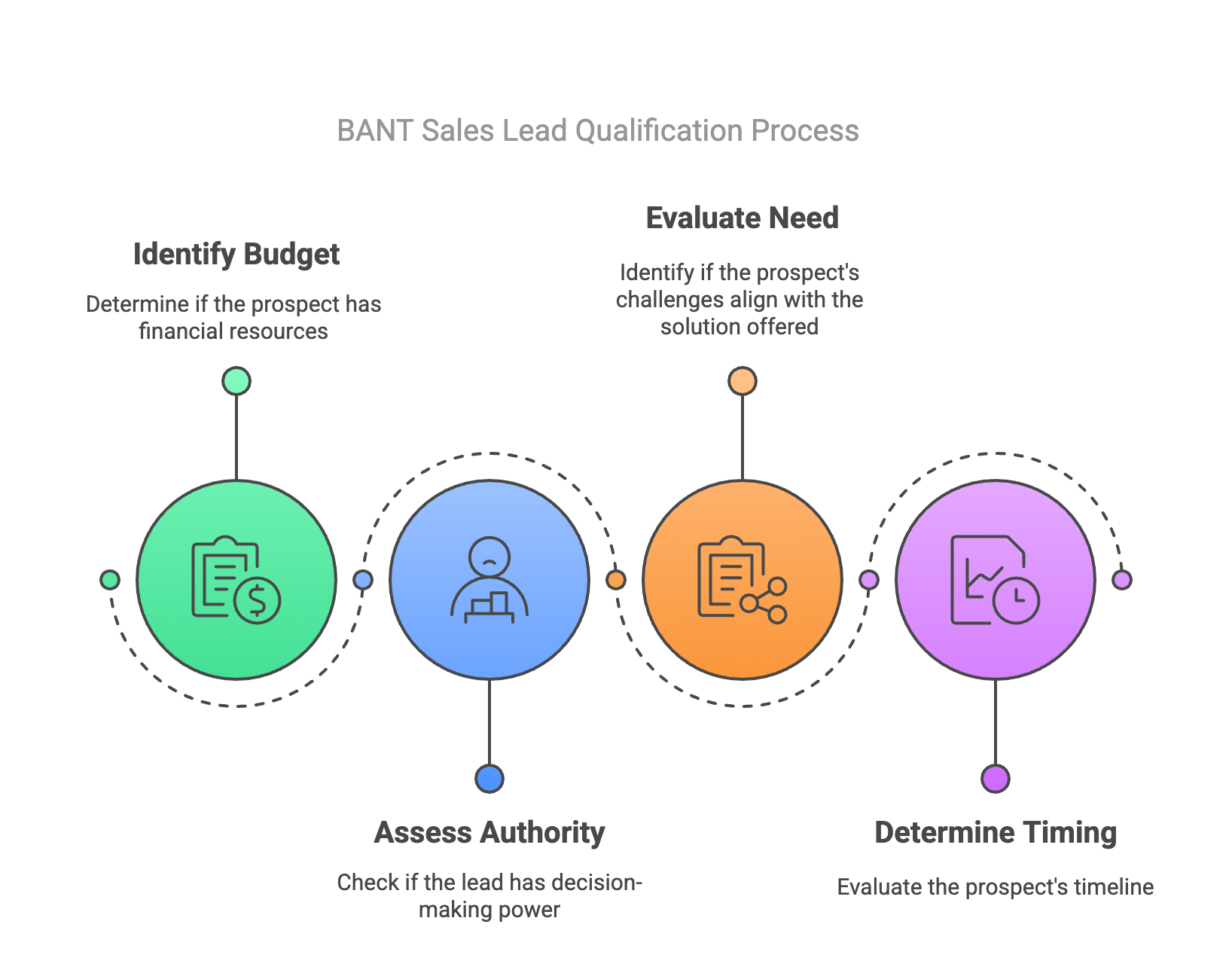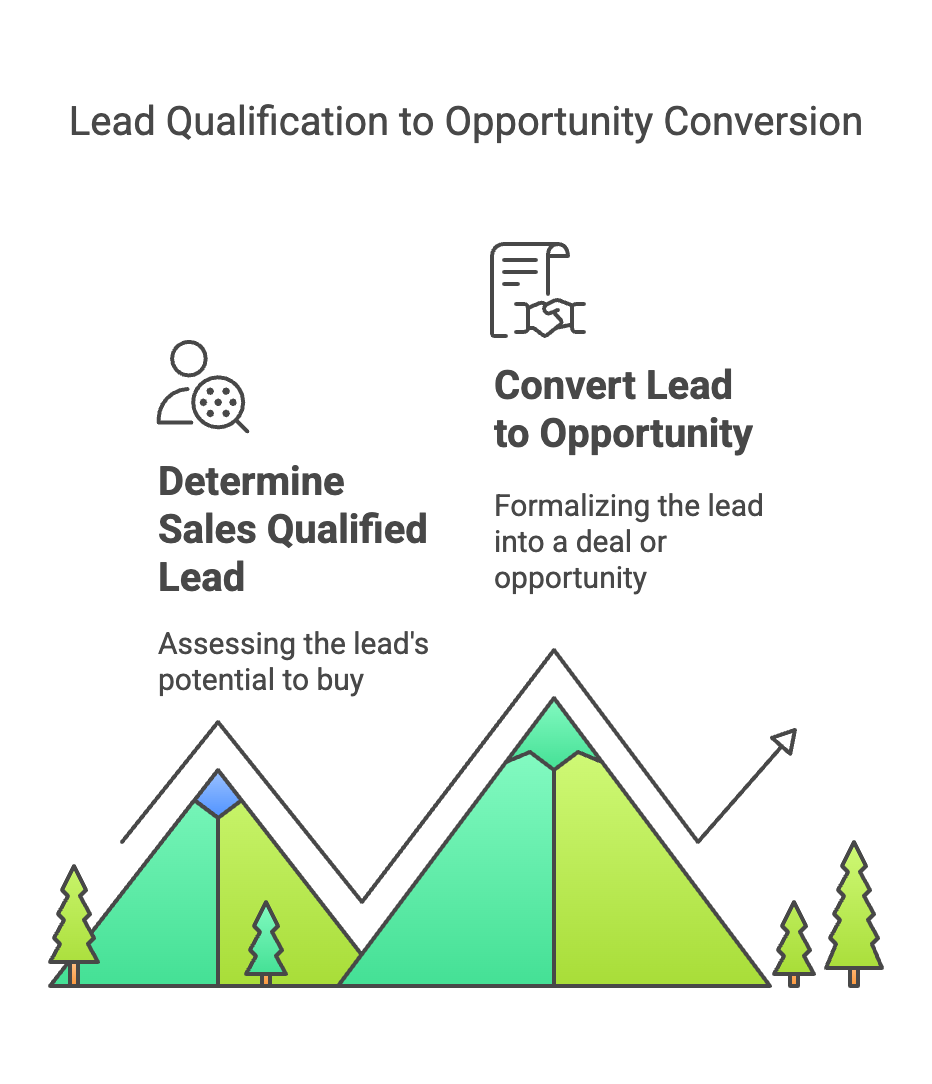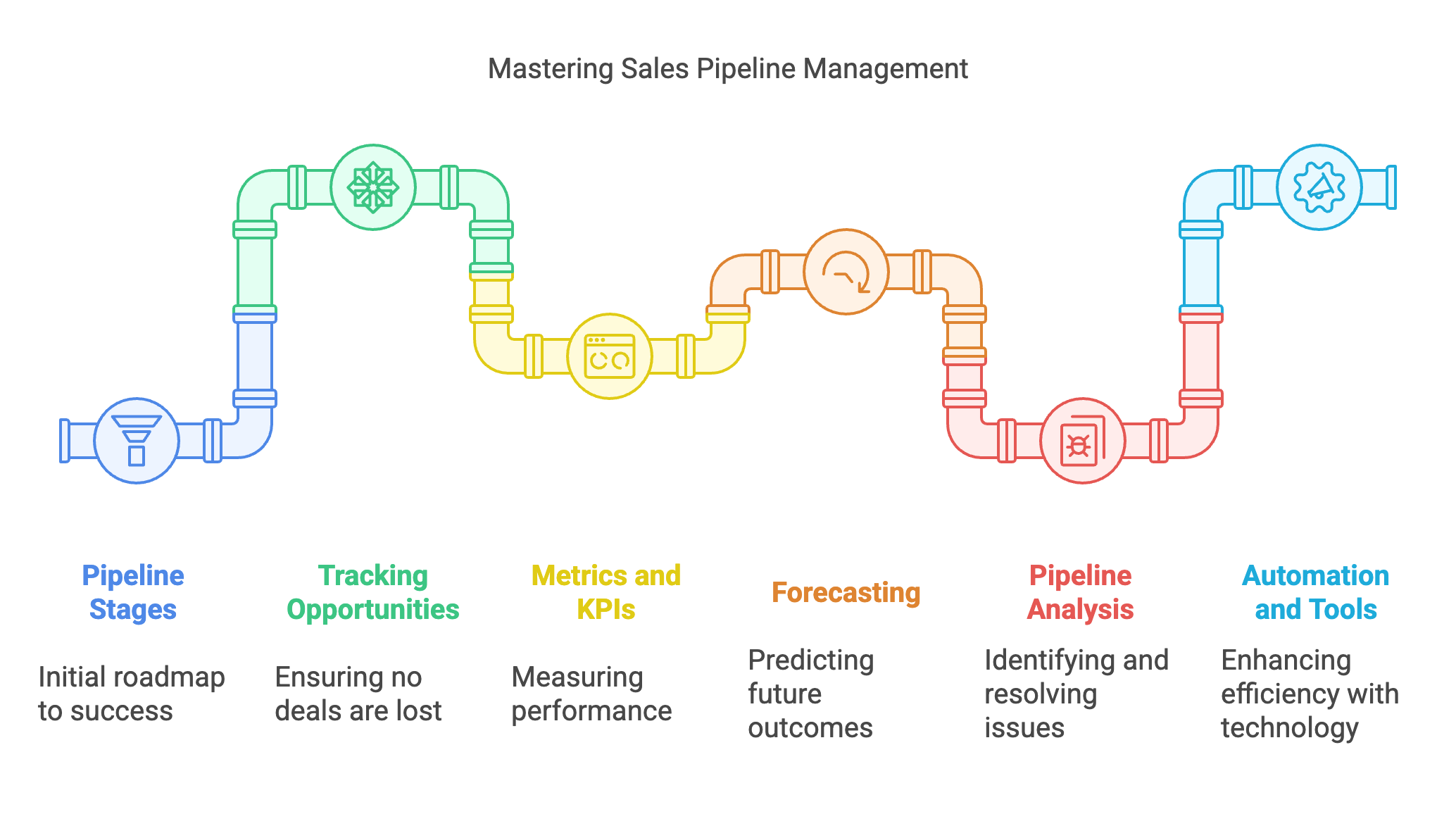- Home
- Sales Process
- Sales Leads
- Qualification
What Is A Sales Qualified Lead?
What is a sales qualified lead? A Sales Qualified Lead has been carefully reviewed and shows clear interest, a well-defined need, and the authority plus budget to move forward.
In the following sections, we'll explore how to identify promising prospects using the BANTS process, a simple yet effective way to qualify leads.
We'll also share real-life examples to illustrate what a qualified lead looks like compared to one that isn’t and explain the next steps of a sales-qualified lead.
Let's dive in and start transforming potential into success!
The BANT Qualification Process:
What Is A Sales Qualified Lead?
The BANT process is a straightforward method for qualifying leads. It focuses on four key elements: Budget, Authority, Need, and Timing.
Examining these aspects lets you quickly determine whether a prospect is interested in and positioned to proceed with your solution.
This framework helps businesses prioritize leads with the proper financial backing, decision-making power, genuine challenges, a sense of urgency, and internal support to ensure a successful sale.
Below is a breakdown of each step in the BANTS process, along with three practical examples for each:

BANT - Budget
This step determines whether the prospect has the financial resources or allocated funds to invest in your solution.
BANT - Budget Qualification Examples
- A small retail business that has allocated funds in its annual budget for upgrading its point-of-sale system.
- A medium-sized manufacturing firm that recently set aside capital expenditure for process improvement technology.
- A local service provider that earmarked a portion of its revenue for investing in customer relationship management (CRM) software.
BANT - Authority
This step checks if the lead has the decision-making power or direct influence to approve a purchase.
BANT - Authority Qualification Examples
- The owner of a small café who is directly involved in vendor decisions and product selection.
- A mid-sized company's operations manager who can choose new inventory management tools.
- A regional branch manager in a growing business with the final say on software purchases affecting their team's productivity.
BANT - Need
This step identifies whether the prospect’s current challenges align with the solutions your product or service offers.
BANT - Need Qualification Examples
- A small business struggling with manual processes searching for automation software to streamline operations.
- A medium-sized company experiencing high customer churn and seeking a CRM system to improve retention strategies.
- A local boutique that needs an integrated e-commerce platform to expand its online presence and boost sales.
BANT - Timing
This step evaluates whether the prospect’s timeline aligns with the appropriate moment for investing in your solution.
BANT - Timing Qualification Examples
- A small business that plans to adopt a new CRM system at the start of the next fiscal year when budgets are renewed.
- A medium-sized retail chain scheduling an upgrade to its point-of-sale systems in Q3 to coincide with a planned expansion.
- A local manufacturing firm preparing to replace its outdated ERP system as part of a routine technology refresh cycle in the coming months.
By following these steps in the BANTS process, you can effectively identify leads interested in your offering and well-prepared to move forward in the sales process.
What Is A Sales Qualified Lead? - Examples
Qualified Lead Examples
- Example 1: A small business owner contacts your team after attending a webinar, expressing a clear need for your solution to streamline operations. They confirm that funds are allocated in their upcoming budget and that they have the authority to make purchasing decisions.
- Example 2: A mid-sized company's operations manager responds to your targeted email campaign, requesting a demo to address specific workflow inefficiencies. They outline a concrete timeline for implementation and have received internal approval to proceed.
- Example 3: A local service provider contacts your website after reviewing a case study relevant to their industry. They discuss measurable challenges that your product can solve, and they have set aside funds for technology upgrades in the near future.
Not Qualified Lead Examples
- Example 1: A prospect from a small business fills out a contact form out of general interest but later reveals that no budget is currently set aside for new investments and that they are only casually exploring options without immediate plans.
- Example 2: A junior employee interested in your product initially engages your team. However, when it becomes clear that this person does not have decision-making power or sufficient influence to drive a purchase, the lead is not considered qualified.
- Example 3: During an initial call, a representative of a mid-sized company expresses curiosity about a specific feature but fails to provide a clear business challenge or timeline for implementation. Without evidence of internal support or an allocated budget, this lead does not meet the criteria for a Sales Qualified Lead.
Sale Lead Qualification Next Steps

Once you've determined that a lead is sales qualified, the next step is to convert that lead into a formal opportunity—often referred to as a "deal" or "opportunity" in many CRM systems.
You are ready to engage in personalized outreach, deliver detailed product demonstrations, and present tailored proposals that guide your prospects' purchase decisions.
A clear prioritization logic is essential to ensuring that your sales team focuses on the most promising leads first. AI-powered lead scoring can streamline this process by analyzing historical data, engagement metrics, and behavioral patterns to rank prospects based on their likelihood to convert automatically. This not only increases efficiency but also helps maintain objectivity in lead evaluation.
Lead qualification is one of the first and most critical steps in the sales process. Accurately assessing and converting qualified leads creates a robust pipeline that maximizes your organization's ability to close deals and drive revenue growth.


